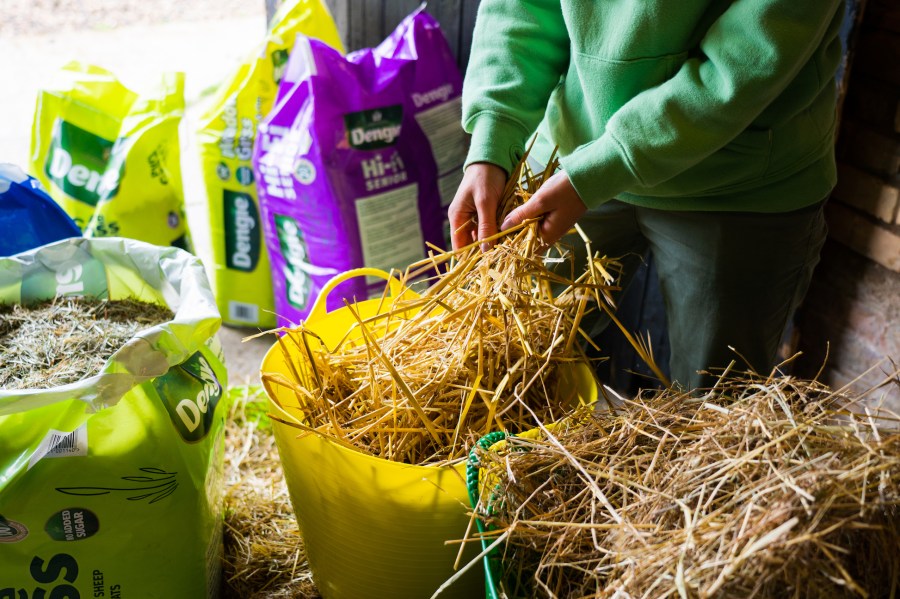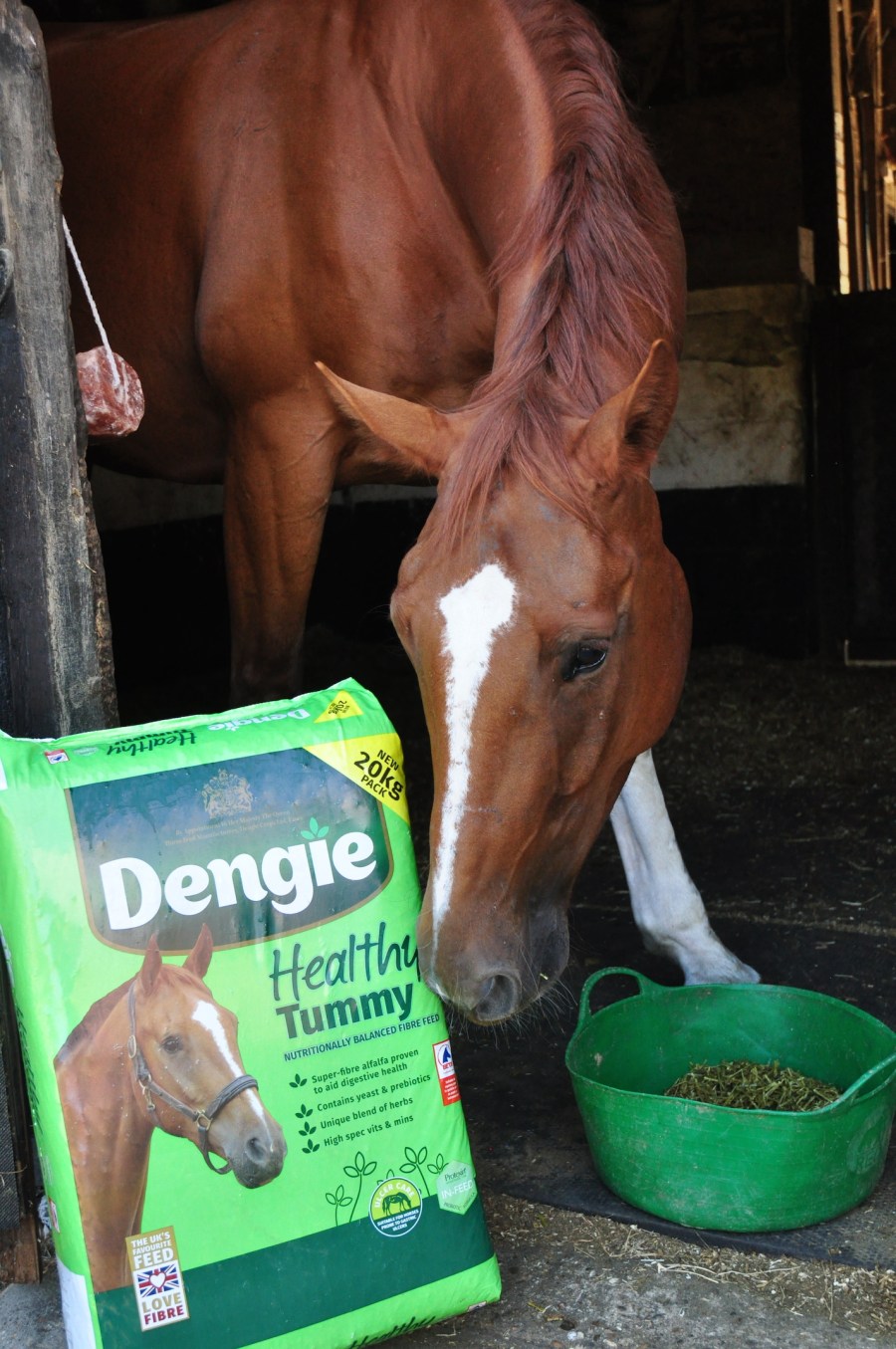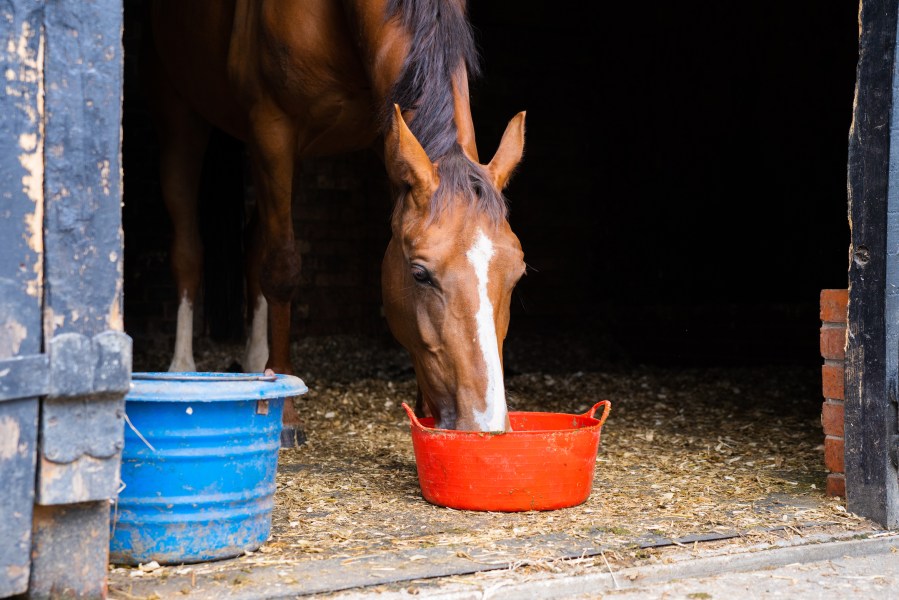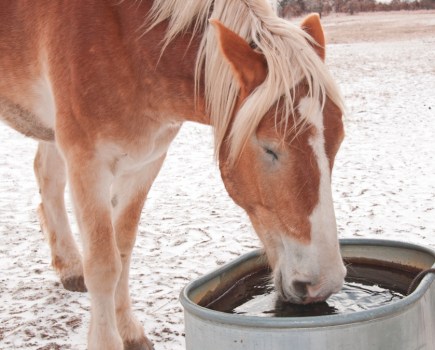Advertisement feature
Awareness and understanding of Equine Gastric Ulcer Syndrome (EGUS) has increased significantly in recent times, but whilst more is known about risk factors for Equine Squamous Gastric Disease (ESGD), less is known about Equine Glandular Gastric Disease (EGGD).
As the names suggest, ESGD refers to ulcers in the squamous region of the horse’s stomach, whilst EGGD describes issues in the glandular region of the stomach. Researchers now describe the latter as being an inflammatory disease rather than an ulcerative disease.
Risk factors for Equine Glandular Gastric Disease
Stress in horses
An increasing amount of evidence exists to suggest an association between stress in horses and EGGD. One study has recently recorded its prevalence in horses in a USA university teaching hospital over a period of three years (Sharbine et al., 2023).
The horses were managed as usual, and EGGD occurred at various points over the three years. The authors state that: “EGGD might improve, worsen or even resolve over time without medical intervention. The risk factors that can be attributed at the individual level need to be acknowledged — in this environment breed, number of handlers, hierarchy and stress were relevant”.
Exercise
Exercise is also a recognised risk factor. This is because it may divert blood away from the horse’s stomach sufficiently to result in damage or weakening of the cells, thereby compromising their defences to acid.
Exercising more than four or five days per week was found to be a risk factor for EGGD in racing Thoroughbreds and showjumpers respectively (Sykes et al., 2019).
In endurance horses, the prevalence of EGGD doubled during the competition season compared with the inter-season period (Tamazli et al., 2011).
These findings have resulted in the recommendation that at least two days off a week is recommended to reduce the risk of EGGD in horses.
What role does diet play?
A recent review of published work relating to EGGD (Banse and Andrews, 2019) found that dietary factors seem to be less important for the control of EGGD when compared to ESGD.
The studies did indicate, however, that decreased pasture turnout or increased grain concentrate feeding may be associated risk factors for EGGD, as they are for ESGD.
Whilst there is no evidence-based link between diet and EGGD, the advice is still to implement the same feeding management as for ESGD, which amounts to reducing starch intake and feeding plenty of fibre.
In many cases, high quality fibre sources can be used to provide the horse with sufficient energy for the work they are doing, reducing the need to feed cereals and thereby reducing starch intake.

Straw can be fed to good doers with gastric ulcers
This has been demonstrated in a recent study by Martin et al., (2023). It showed that horses in training who are fed a third of their total ration as alfalfa with just 7% oats performed comparably with those horses being fed 33% oats (the remainder of this diet was hay).
The replacement of oats with alfalfa had no detrimental effects on performance or muscle tone and, in fact, altered energy metabolism in such a way as to potentially improve performance and recovery.
Feeding straw to horses with EGGD
Yes, you can feed straw to good doers with EGGD.
In 2009, a study looked at the incidence of gastric ulceration in a population of horses and found that those that were fed straw as the sole or predominant fibre source were more likely to have ulcers.
The key fact that tends to get lost in communication is that straw was used as the sole or predominant fibre source, which is not typically done in the UK.
Recognising that straw can be useful as a low-calorie forage source for good doers, a follow up study has been published investigating the safety of feeding 50% wheat straw to replace haylage. The study by Jansson et al., (2021) found no ill effects and specifically looked for gastric ulcers.
Dengie Ulser Lite
 The latest feed to join the Dengie range of products approved with the BETA mark as being suitable for horses and ponies prone to EGUS is Ulser Lite.
The latest feed to join the Dengie range of products approved with the BETA mark as being suitable for horses and ponies prone to EGUS is Ulser Lite.
It has been developed by our highly qualified nutritional experts with the ulcer-prone good-doer in mind.
The predominant ingredient is chopped oat straw blended with some chopped and pelleted grass to provide some natural sweetness, whilst keeping the energy level as low as possible.
Alfalfa pellets are included for their natural buffering potential, while the addition of prebiotics and yeast promote digestive health. The added herbs are those used very successfully in Dengie Healthy Tummy to tempt even the fussiest eaters.
‘He’s looking and performing the best he ever has’
Freddie’s owner Joanne was worried about gastric ulcers due to his competition lifestyle. Even though Freddie is in a lot of work, he is such a good doer which meant Joanne was unable to feed him Dengie Healthy Tummy at the recommended quantity for his size.
After a visit from performance horse nutritionist Claire Akers, Jo started Freddie on Dengie Ulser Lite alongside a balancer to provide him with a balanced diet.
“Freddie has lost the excess weight he was carrying and is looking and performing the best he ever has,” says Joanne.
“Freddie can be crabby and argumentative, but we have seen real improvement in his behaviour since changing his diet. He has more energy, is more forward going off the leg, and appears less grumpy.”
Freddie weighed 588kg before starting Ulser Lite and was condition scored at 3.75 on a five-point scale by Dengie nutritionist Claire.
When the horse was reweighed six months later, he had lost 26kg and was condition scored at 3.25.
As Ulser Lite is low calorie, Freddie can have a larger quantity. This provides him with more fibre and chew time, as well as keeping him occupied for longer.
Increasing a horse’s chew time helps promote more saliva production, which in turn helps with buffering acidity in the horse’s digestive tract.
Feeding working horses with EGGD
 Studies back in the early 2000s (Nadeua et al., 2000; Lybbert et al., 2007) showed that alfalfa was more beneficial for horses with ulcers (ESGD) compared to grass forages, as the high levels of calcium and magnesium it contains act as natural buffers to acidity.
Studies back in the early 2000s (Nadeua et al., 2000; Lybbert et al., 2007) showed that alfalfa was more beneficial for horses with ulcers (ESGD) compared to grass forages, as the high levels of calcium and magnesium it contains act as natural buffers to acidity.
More recently, studies carried out by the Lab to Field research group based in Dijon, France, have shown the protective effects of alfalfa in horses in training.
Their findings demonstrated that clinical success with horses with EGGD was 47.7 times more likely in horses fed alfalfa pellets as part of their ration, compared to those on concentrate-only rations.
Current veterinary advice is to implement the same feeding practices for all forms of EGUS.
Dengie Healthy Tummy
Dengie Healthy Tummy is a combination of chopped and pelleted alfalfa and is also approved with the BETA mark for horses and ponies prone to EGUS.
This process involves an independent assessment of the product’s suitability and is checked by the Veterinary Medicines Directorate to ensure false claims are not being made.
Dengie Healthy Tummy is a medium energy feed and so is ideal for supporting those in work or helping to promote weight gain.
Dengie Alfa-Beet is a great mash that is full of highly digestible fibre that can be fed alongside to help promote weight or support work with slow-release energy.
References
- Banse and Andrews (2019) Equine glandular gastric disease: prevalence, impact and management strategies. Veterinary Medicine: Research and Reports
- Jansson et al., (2021) Straw as an Alternative to Grass Forage in Horses—Effects on Post-Prandial Metabolic Profile, Energy Intake, Behaviour and Gastric Ulceration. Animals. 11.
- Julliand et al., (2023) Effect of diet composition on glandular gastric disease in horses. Journal of Veterinary Internal Medicine
- Lybbert et al., (2007), Proceedings of Annual Convention of the AAEP, Orlando, Florida, 2007.
- Martin et al., (2023) Effect of high-starch or high-fibre diets on the energy metabolism and physical performance of horses during an 8-week training period. Front. Physiol. 14:1213032.
- Nadeau et al., (2000) Evaluation of diet as a cause of gastric ulcers in horses. American Journal of Veterinary Research. 61 (7):784-90.
- Sharbine et al., (2023) The prevalence and changes over time of equine glandular gastric disease in a teaching herd population EVE 35 (12)637-648
- Sykes et al., (2019) Management factors and clinical implications of glandular and squamous gastric disease in horses. Journal of Veterinary Internal Medicine 33 (1) 233-240
- Tamzali et al., (2011) Prevalence of gastric ulcer syndrome in high-level endurance horses. Equine Vet. Journal
- Voss et al., (2022) A study comparing the healthy and diseased equine glandular gastric microbiota sampled with sheathed transendoscopic cytology brushes. Journal of Equine Veterinary Science.









